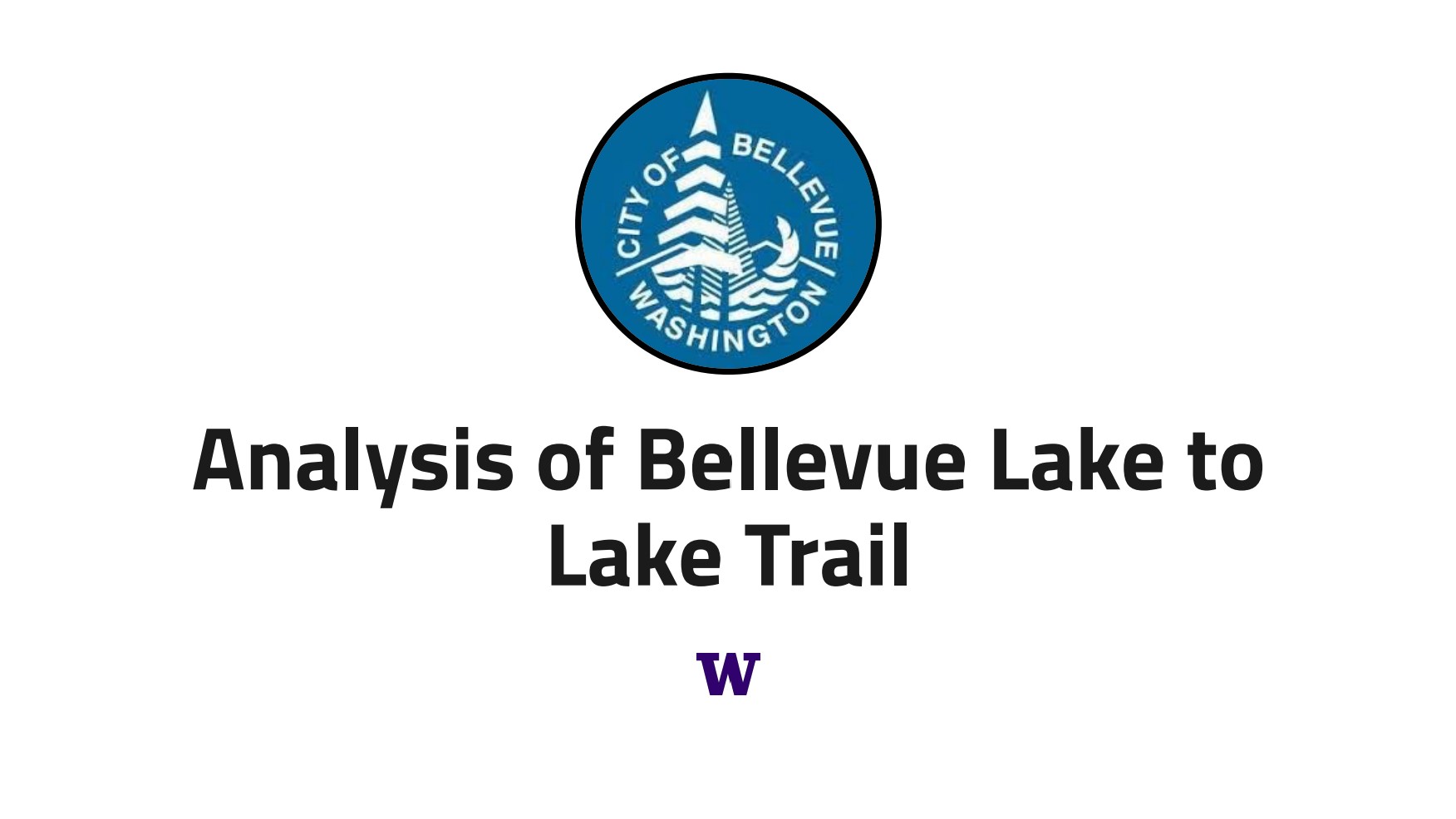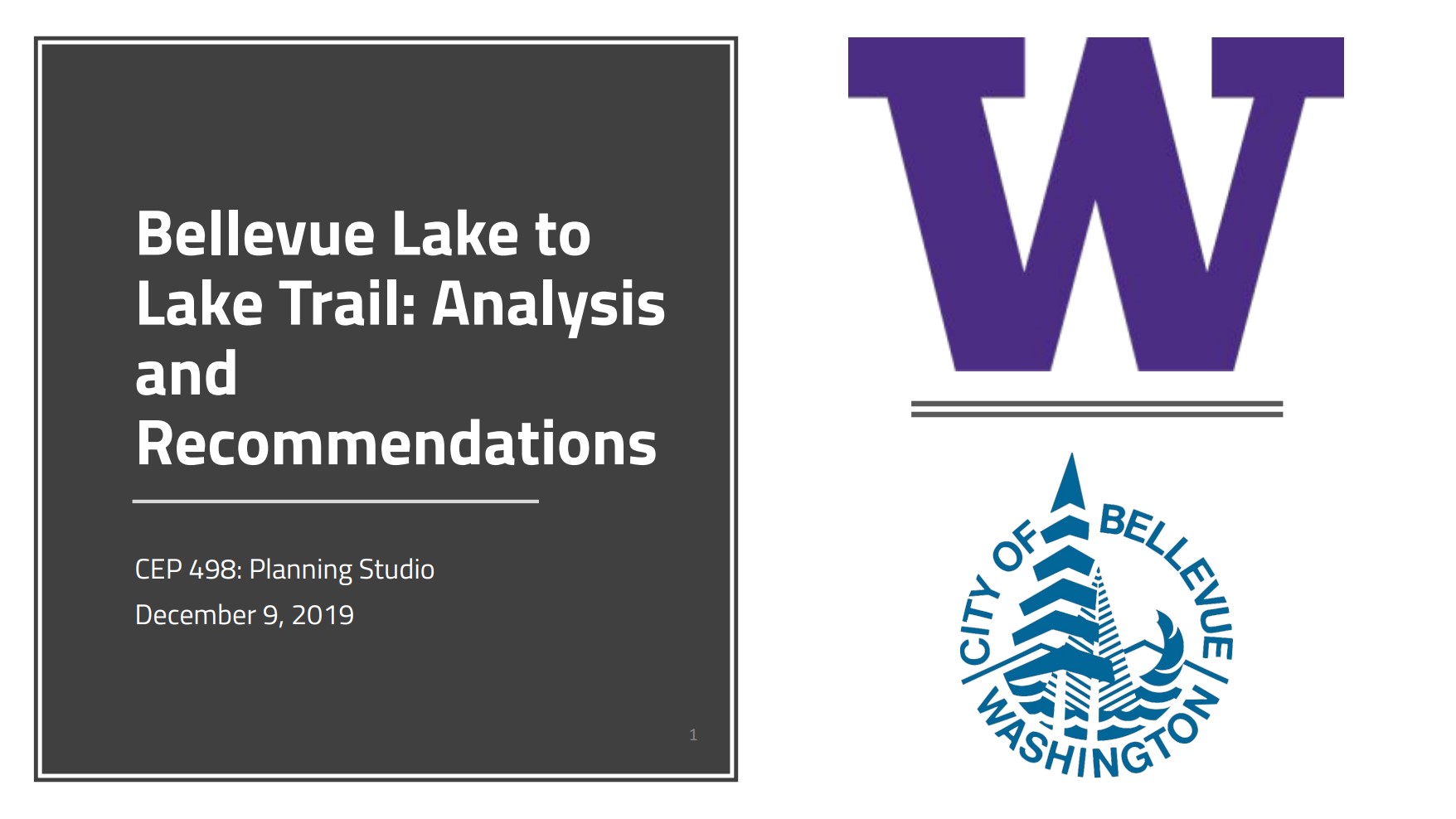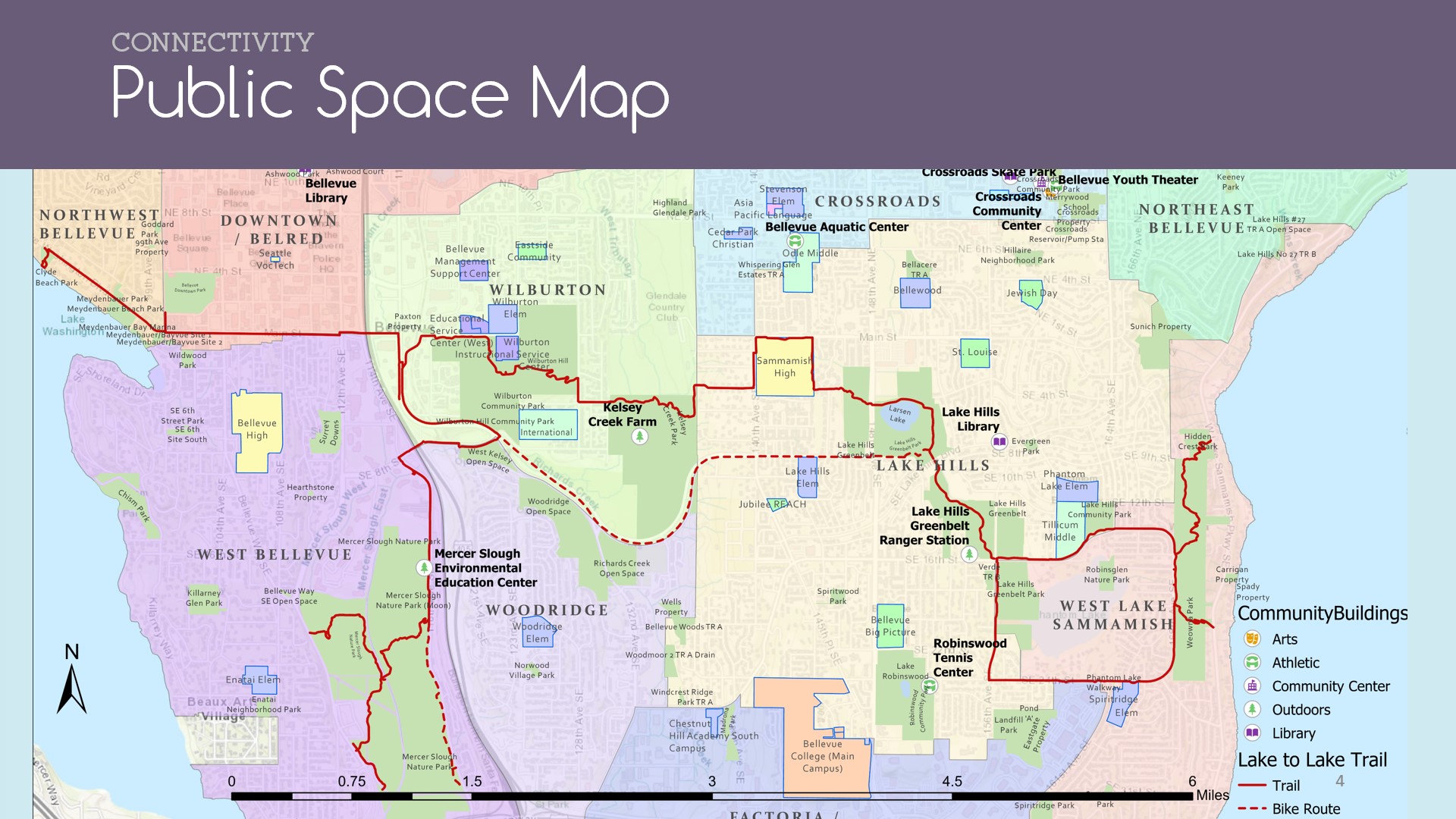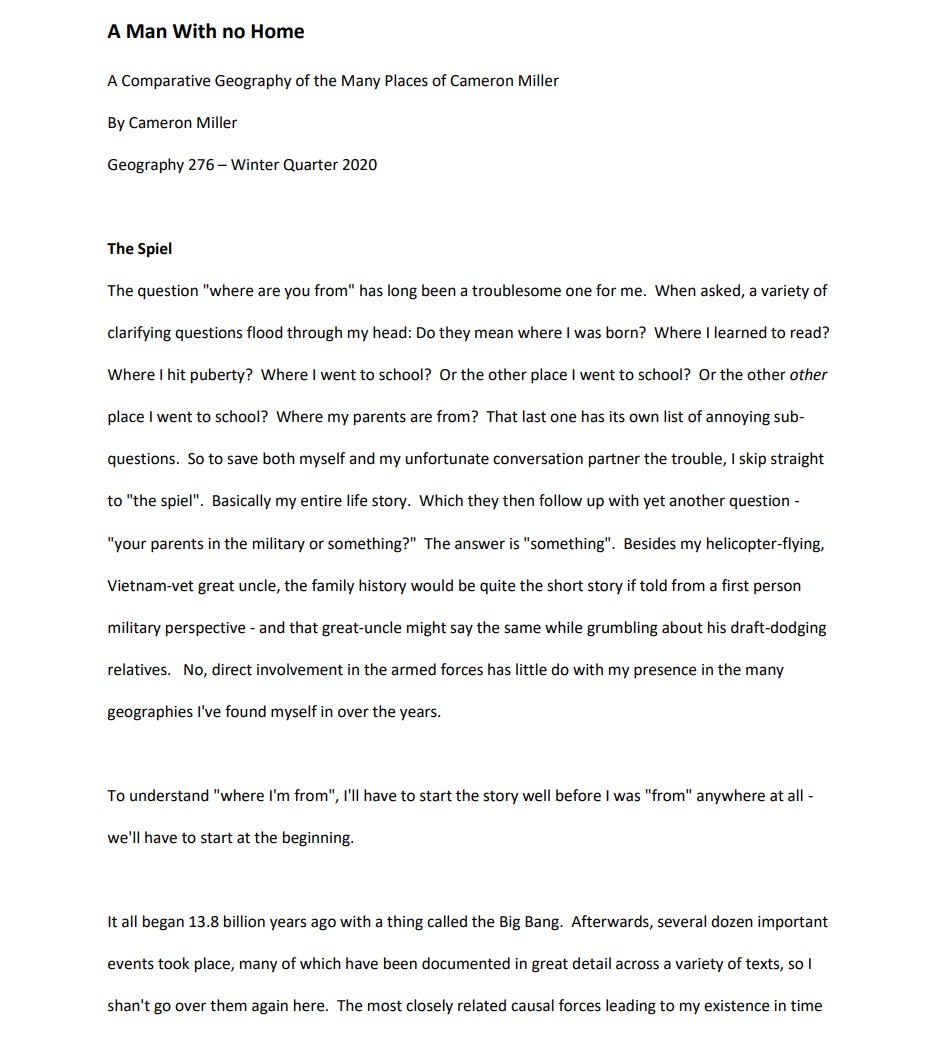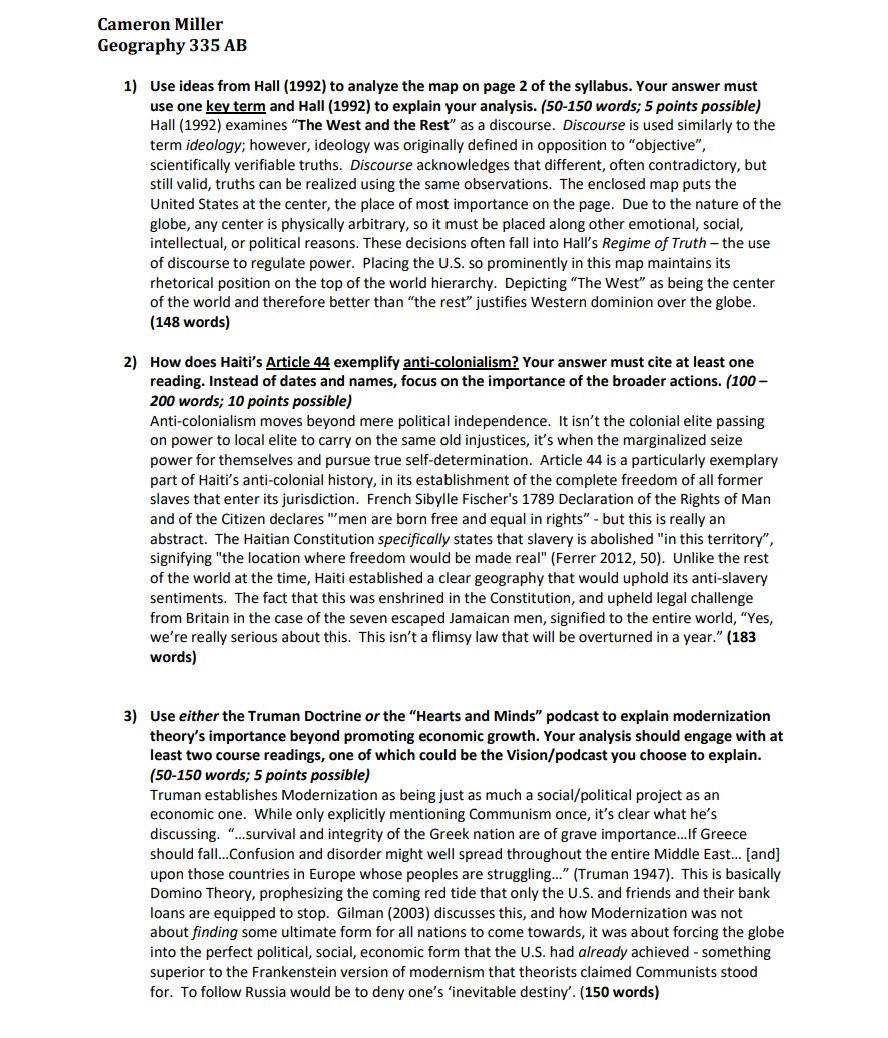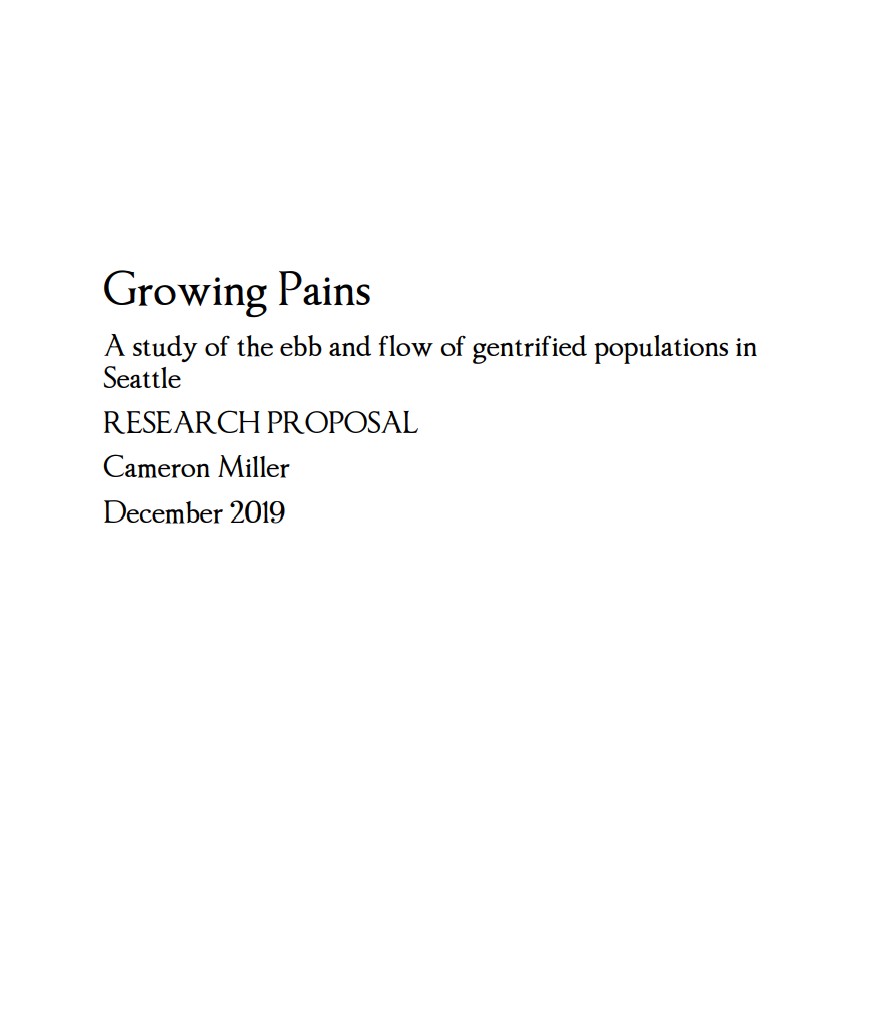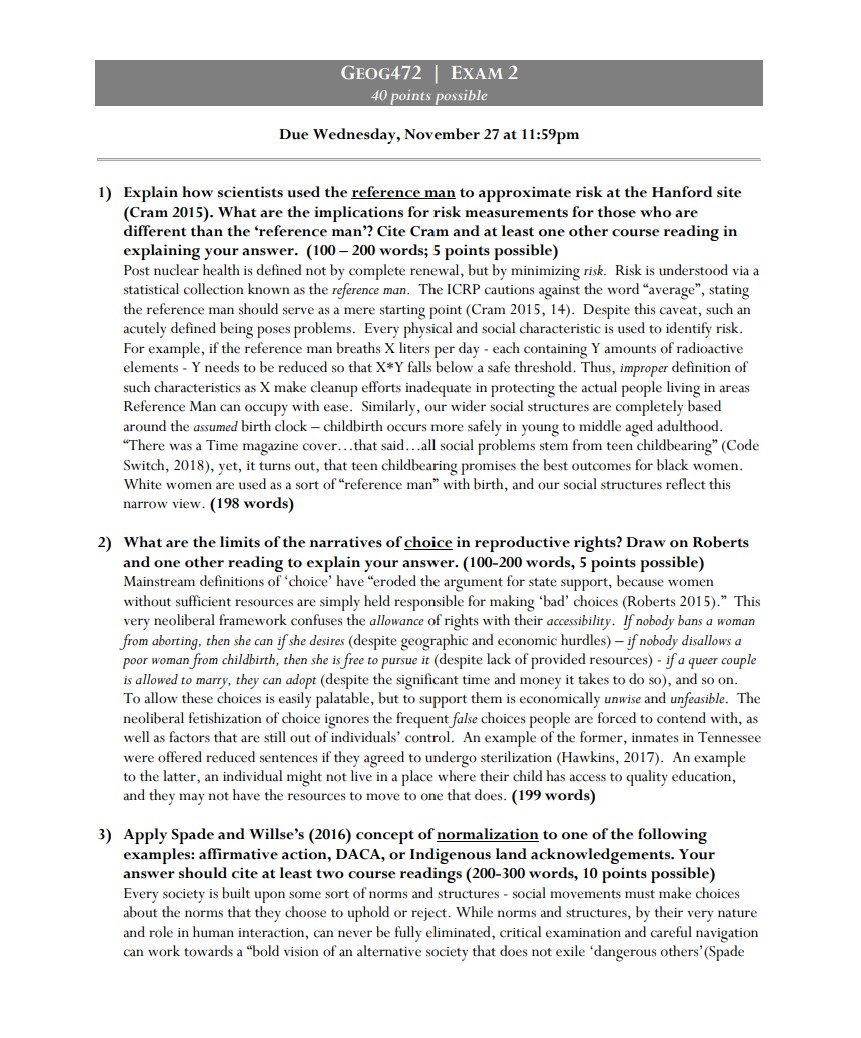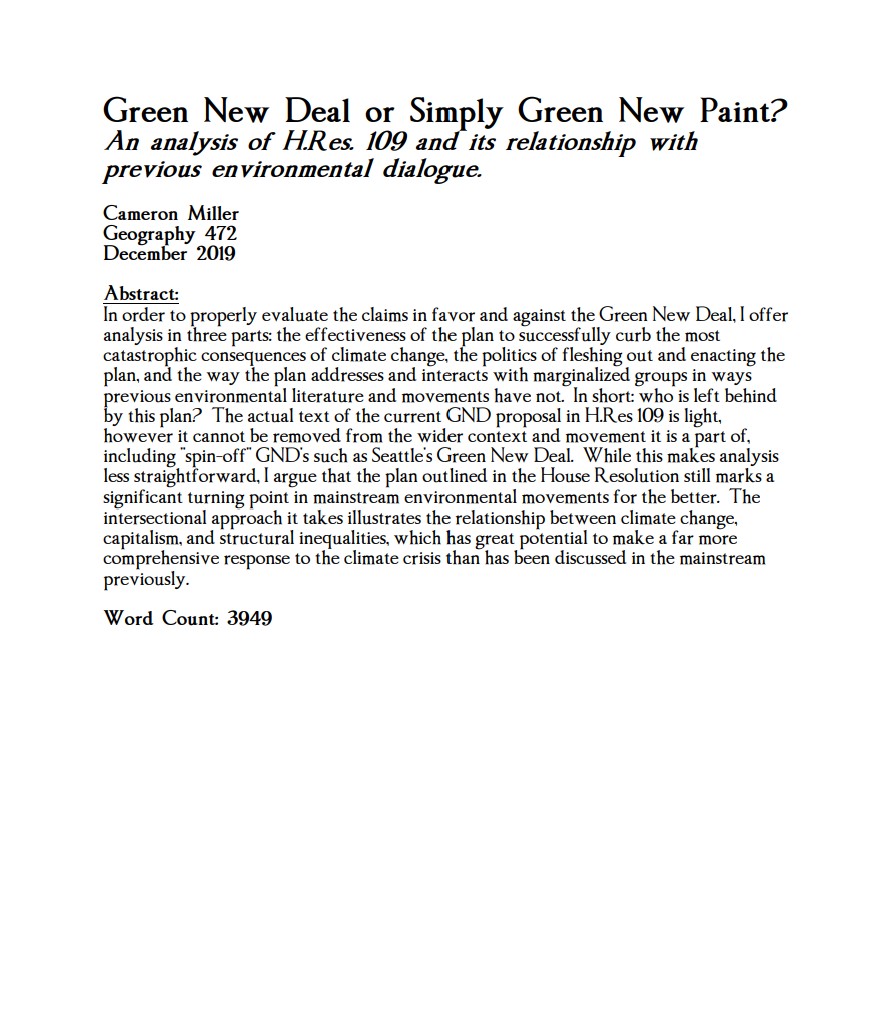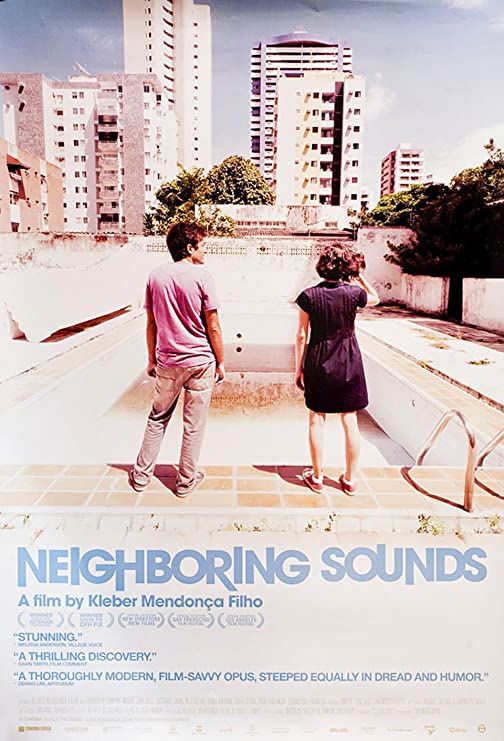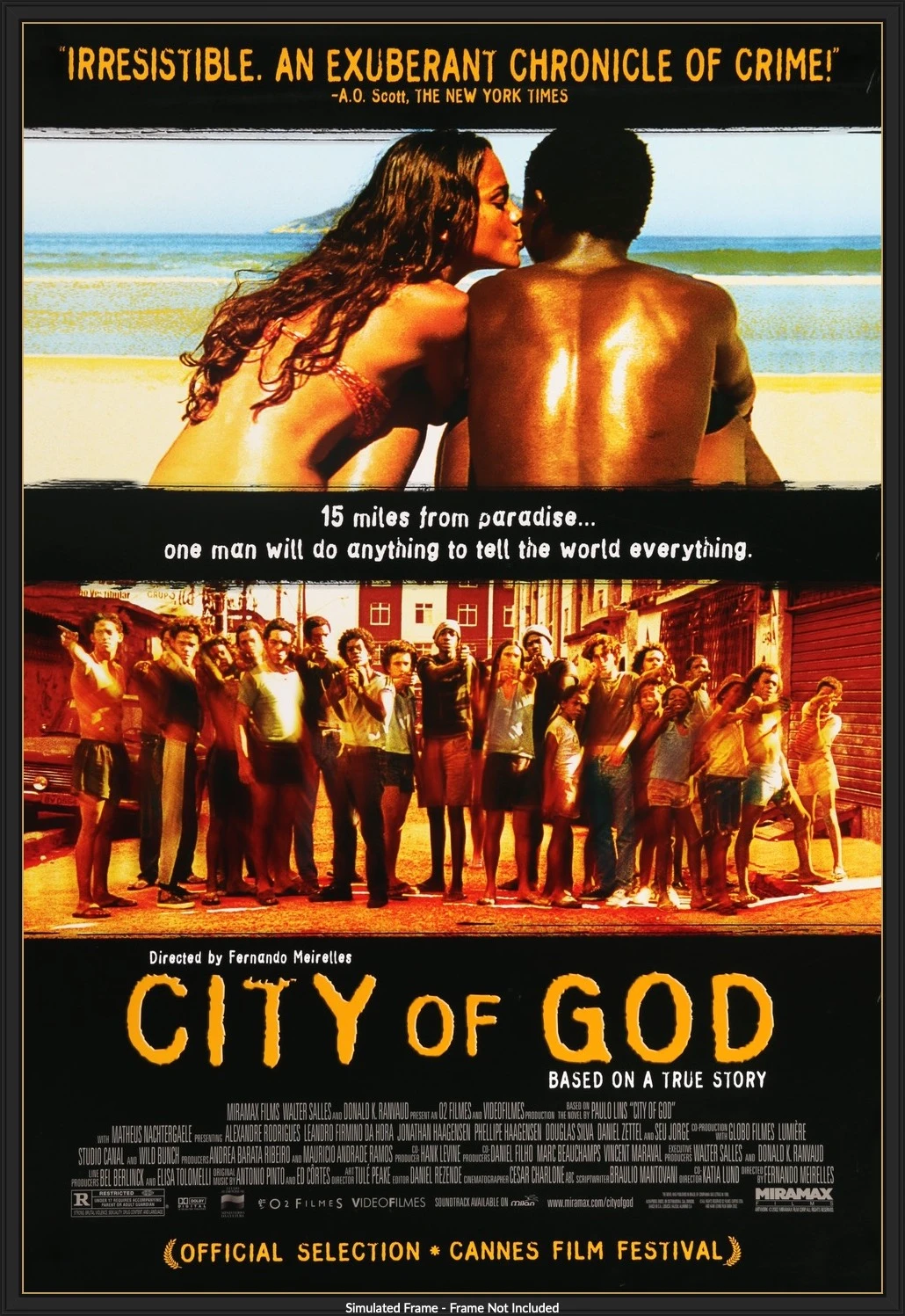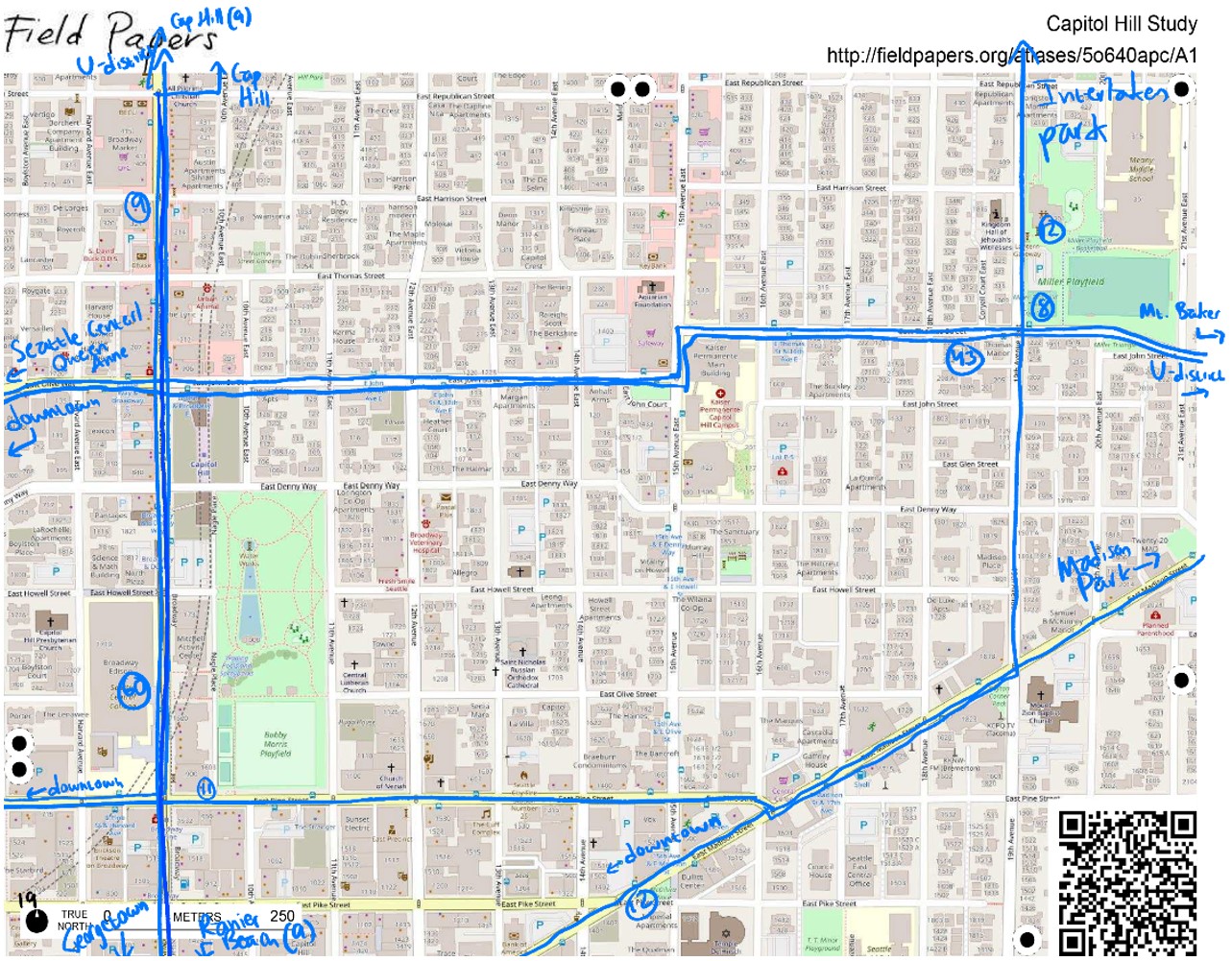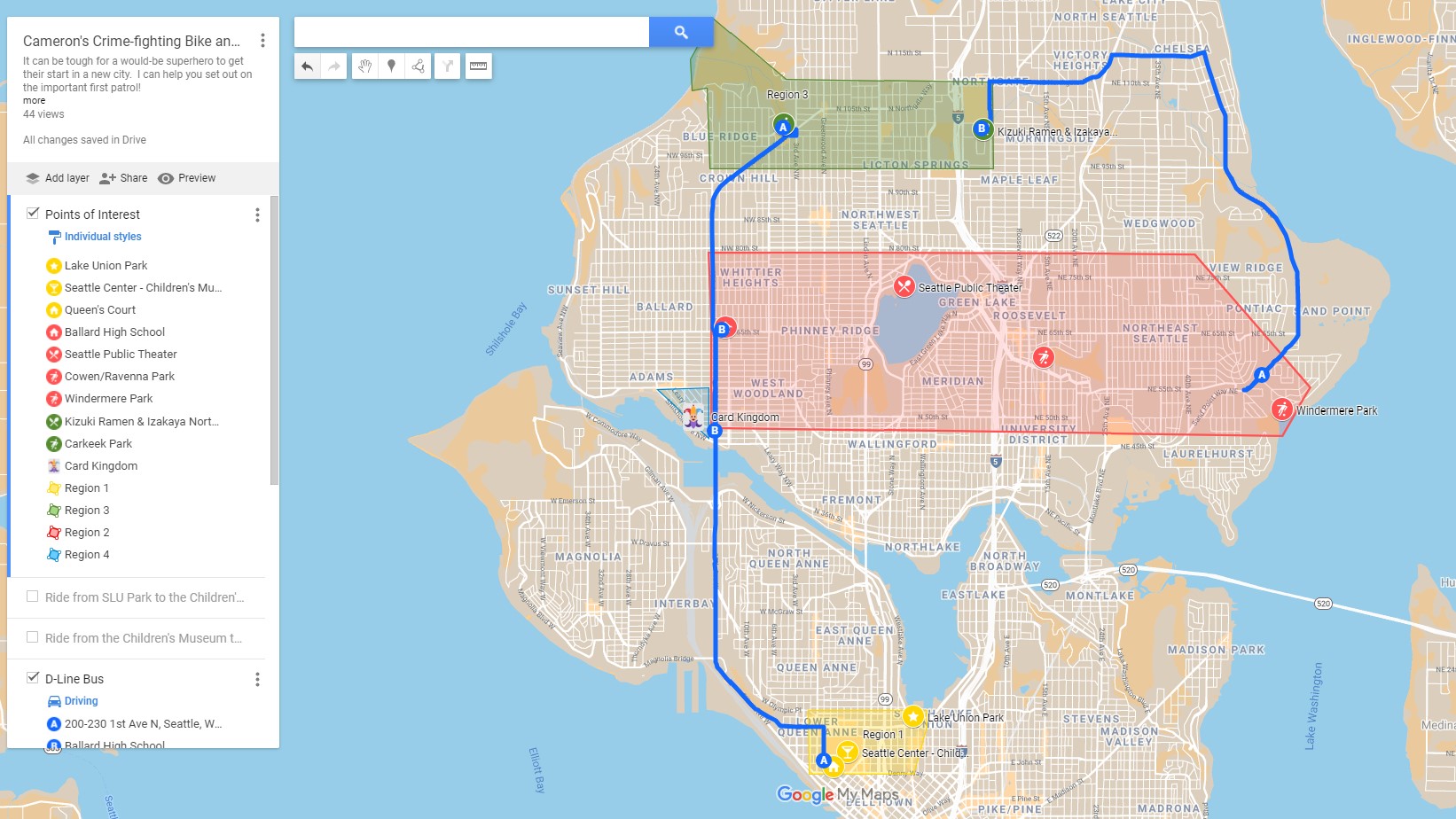Studying geography has helped to change who I am and how I see the world. It was far from what I originally went to university to learn about, but through the winding road of curiosity, uncertainty, and missteps elsewhere in my life, this is where I found myself. Geographer Rashad Shabazz wrote that "Geography makes social and political inequalities visible by situating them within physical space." While for several years I've had a passing interest in examining spaces and cities, often enjoying a good afternoon tracing streets and neighborhoods in Cities Skylines, studying Geography taught me to better see these inequalities, and start to think about how to fix them. The places we build, the way phenomenon occurs across different places, how these places in turn shape us - it's all fascinating and important to our daily lives, and in some form or another, I plan on working with these questions with a sizeable sum of my productive bandwidth for the next several years. My studies have sent me scrawling on maps, digitizing data, reading paper after paper, and treking across neighborhoods in both Seattle and Bellevue, and I wouldn't have it any other way.
Housing, Abolition, Justice Podcast
2020
This was my final project at the University of Washington before graduating. This course was all about policing - its history in the US, and what activists are looking to do with its future. It really felt like a great culmination of all the things I had learned in my years in the Geography program, and I'm glad that this was how I finished things. The class and project helped me develop ideas that had been introduced to me in those before, and if you happened to read my work under "Essays on Race and Nature" before listening to this podcast, you'd find me touching on many of the same ideas from many of the same sources, but expressed more thoroughly and elequently the second go around. I plan to keep working on these ideas, but for the time being, this podcast, which covers how housing, environmentalism, and police abolition relate to one another, seems like a good send-off for that portion of my life. It is currently the piece of work that I think I can be most proud of with the fewest caveats. I mean I would probably tighten up the script a little bit, and work on the audio more, but I stand by the content. The research and ideas were all well developed and tied together with a strong conclusion and a catchy jazz theme tune.
City of Bellevue's Lake to Lake Trail
2019-2020
For two quarters, I worked in a small group to help the City of Bellevue Parks & Community Services Department begin planning their new Lake to Lake Trail plan. This was a good project both in terms of social research and thinking about equity, and in getting hands-on technical practice and learning important planning details. The trail runs through urban areas, suburban areas, and nature parks from, as the name hints at, Lake Washington to Lake Sammamish. The first quarter was made up of preliminary research. We walked a small portion of the trail in Old Bellevue and examined other comparable trails across the country, including the Atlanta Beltline, which was the trail I researched. I also did some basic GIS work for this project, by making land usage maps from city data, and using that to draw conclusions about the state of the area surrounding the trail and the types of people who might use it. I outlined several possible walks along this trail (from commuters, students, and tourists), their routes, and the length of the walks, to further develop understanding of possible usage. Using our research, we came up with a few ideas and reccomendations, including changes to the street, a plant palette, signage, and even logos that will definitely not get used. Our initial research into trails and our reccomendations are split into two PDFs, with the earlier trail research recapped in the second.
I was the only of the original students to stay on board for the second quarter, and became the sort of defacto leader of the new group. Our scope expanded to the entire trail, so each group member walked and analyzed one smaller segment. Together we came up with a set of values to guide further development. They were: Meditative, Timeless, Art & History, Journey, and Connectivity ("Play" was a value we kind of thought of but didn't write out explicitly, and it was brought up after the presentation as a likely addition if this list gets used, which it might!). We gave explanations and justification for each value, and a few implementation ideas that exemplified one or two along each trail segment. This quarter had me responsible for the design of our presentation, land use and public space maps made in ArcGIS, art and drawings used to illustrate ideas in our presentation, communication between our group of students and the City of Bellevue employees, and research of the Lake Hills neighborhood segment, which includes my idea for Meditative Gazebos. This quarter's work is in the 3rd item included here. The thumbnail to the side links to a slightly reformatted static PDF, although if you'd like to see the powerwpoint with its few moving parts still attached, click here. For an overview of my design/illustration work, see the Design page of this site.
I wanted to continue this project for longer, but sadly had to move on to other classes in order to complete my degree. But it would be really cool to one day travel to Bellevue and see if any of our ideas made it into reality.
Meet me in Downtown Tour
2020
For this class all about Seattle geographies, Bryn Sinclair and I made a podcast examining the history of the city's urbanism, through an examination and comparison of Downtown shelters and recently constructed luxury apartments. This was compiled into a walking tour, although as this was the first quarter situated in the pandemic, our walk was purely virtual. The tour (which is unfortunately now missing some images and the map of our actual route, which covers a good portion of Downtown seattle and alternates between shelters and condos) is available here, although most if not all of the info should be in the attatched podcast.
A Comparative Geography Essay of the Self
2020
This assignment had us write an ongoing essay through the quarter about our own personal political geographies, through a series of different lenses. First I wrote a comparison of the different suburban/urban environments I grew up in, then I was tasked with connecting my life to broader, geopolitical trends, of which I chose the rise of the Khmer Rouge in Cambodia, and lastly I analyzed how these things and more come together to form ideas of nationalism, national identity, and therefore a personal identity for myself. Ultimately, this dramatically-titled paper is a Geographer's way of asking "Who am I?"
Writings on the Developing World and Chinese Labor
2020
This was a class all about the Global South, it's relationship to the Global North, and what the heck "development" means and how it's pretty political. First of the included documents is a set of short response questions pertaining to topics of development, modernization, imperalism/colonialism, and Cold War politics. Second is a research essay (rather, a compilation of three short essays) on South Korea and it's evolution from a colony of Imperial Japan to the state we know it as today, analyzing theories around most of the previously mentioned topics, and our good friend neoliberalism.
The following quarter I also took a class on China's development, focusing largely on the Mao era and then on the past decade or two. For that class I wrote an essay on the working conditions for migrant laborers, the Foxconn suicides, and their relations to the US and American workers. The reason I am linking these two courses together is to include a little disclaimer. These courses are both just random Geography classes. They aren't set up to expect anyone to be an expert on any foreign politics. While I did my best to do an adequate amount of research for a school paper, I don't claim to be any sort of expert on either South Korea or China. I include these papers because I believe I did good work in connecting what we learned in class to the research I was able to complete (I think the essay on China was particularly good in this regard), but forgive me if there are any pertanent details of either country's history or culture that I missed in a the limited time that I had.
Gentrification Research Study Proposal
2019
UW's Geography department requires students to take a course all about research. As an ongoing project through the quarter, you are given the task of creating a full project proposal, from the literature review to the budget. Although we were still expected to give it our due diligence, the proposal was just an exercise, no need to proceed to the lengthy project itself - so why not ask for 150 thousand dollars to give to a crack team of well-paid assistants? Well, decently well-paid, if I were doing this agian I would double the salaries, but otherwise I stand by my research. I came up with what I think is a fairly novel and worthwhile, if time consuming, method of examining gentrification in Seattle using city records to find people who moved in and out of the city. Included is a survey I would send out to these people, and the paper goes through my reasoning for each question. A topic of particular interest to me is people's commutes, as I argue the morning journey to work stands at the intersection of several important factors including the environment, housing, and human happiness. If you are interested in gentrification and have about around 300-500K to spend (now that I'm out of school I need a full time salary, you see), please take a look at this paper and send me an offer if it piques your interest.
Essays on Race and Nature
2019
During Autumn of 2019 I took a class focusing on the intersection between racial justice and environmentalism. This is where I began to really feel like I was getting into the weeds of Geography - reading papers, doing research, and being asked to think about new concepts in ways I had never before. This was hard work, but unlike the math classes that I had struggled with for years before this, this felt like something I could slowly work through and figure out, instead of endlessly banging my head against a wall. The lessons I've taken from this class are in my mind nearly every day, as I continue to refine and expand my understanding of them. This was an inflection point, both for my academic career and my personal politics and thinking.
Included here are two bits of writing from this class. The first document is a series of short answers/mini essays on a variety of topics: human health, choice and reproductive rights, societal norms, racial weathering and power, white supremacy and resilience. The second is a long research essay analyzing the Green New Deal. As I said, I've been continuously developing the concepts covered in this class since then. My GND essay in particular is something that I feel I could research and write better in the present. Still, it's a decent summary of the work around the Green New Deal (as it was in 2019), and is a decent example of my writing and research. There's also a lot of clever titles and subtitles that often riff off of the color green. Just don't expect a worldview-shattering argumentative essay or anything.
Geography of Cities Film Analysis
2019
The Spring of 2019 had me back at analyzing specific models of and phenomena in cities. Through the quarter, we were given two movies that focused on certain aspects of urban life to watch and responds to. Both films are made in and about Brazil, which I believe is the country my professor was doing research in. The first essay is about the film Neighborhing Sounds, where I discuss physical walls in the city and the relation between private and public space. The second essay is on City of God, about the infamous favela of the same name. This essay discusses poverty and violence plus a few more things about the text and surrounding the text.
Capitol Hill GIS Training
2019
At this time I was still focusing my education largely on technicalogical skills, so I spent this winter learning some of the basics of GIS. For these two projects we were using Field Papers to mark data by hand onto maps, and then transfer it into ArcGIS afterwards. Perhaps the grueling pace at which Esri's desktop software moves is what steered me towards the more humanities-focused side of things (thankfully I was able to use newer versions in later classes).
The first project also had us practice making a "story map", but sadly it seems my project has been cleaned from the department servers or wherever it was stored, and that link is now defunct. So it's really the second project where most of the interesting stuff remains, but I'll include both.
Cameron's Crime-fighting Bike and Bus Tour
2018
My first formal entry into geography (although I took a class about cities in another discipline before this) was in Winter of 2018, with a class on digital geographies. Digital geographies is kind of an odd thing, it's about places in the real world, but also about the internet and electronics and things? An unituitive but useful start, as it helped me see that geography can come up just about anywhere. My 7th grade math teacher used to say, "Math is everywhere!" And then my 7th grade geography teacher would respond, "...because of geography!" I used to think that he was being a bit pedantic, but accepted it because he was just a funny, sarcastic teacher. Since then, I've learned to appreciate this response a bit more, now that I've seen all the unexpected and interesting places where geography can pop up. The digital world is increasingly collecting more data about the physical, in more sophisticated and clever and sometimes scary ways. Geography and the web are affecting each other as they become ever more intertwined.
For this project, and throughout the class, we were being introduced to working with and presenting digital data by creating maps and integrating them into a portfolio website. It's from here that the skills and layout that would lay the groundwork for this website were born. And what better way to start off the quarter than with a map built for superheroes? The included image to the side links the map itself, while you can find my writeup here to find out just what the heck my thought process was.
